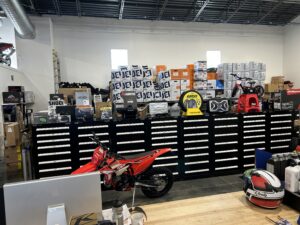Grasping Bike Gears: How to Optimize Your Riding Experience
In the realm of motorcycling, mastering the art of equipment manipulation is important for enhancing your riding efficiency. Appropriately utilizing and comprehending motorcycle gears can significantly influence fuel, acceleration, and control effectiveness, changing an ordinary experience right into a seamless, thrilling journey.
Comprehending Gear Mechanics
Just how do the details of gear mechanics influence motorcycle performance? At the core of motorcycle dynamics, gear auto mechanics play a critical function in converting engine power right into movement, inevitably determining rate and control. Gears, thoroughly crafted parts, enable cyclists to optimize torque and speed, making certain a seamless transition via various terrains and velocities. The equipment ratios, meticulously developed, figure out the relationship in between engine transformations and wheel turns, affecting velocity and fuel performance.
Understanding gear mechanics starts with identifying the significance of the transmission, which houses numerous gears of varying sizes. These gears connect with a process known as meshing, where teeth of different equipments involve to transmit power.
Furthermore, the principle of equipment shifting is indispensable to making best use of performance. Smooth and timely shifts make certain that the engine runs within its ideal power band, avoiding unneeded strain and improving longevity (motorcycle shop). By comprehending these mechanical complexities, motorcyclists can achieve an unified mix of power, effectiveness, and control, boosting their riding experience
Timing Your Shifts
Change timing mastery is crucial for enhancing motorcycle efficiency and enhancing the riding experience. Properly timed changes ensure that the engine operates within its optimal power band, which is crucial for preserving control, achieving smooth acceleration, and making sure the long life of the motorcycle. Riders need to develop an intuitive feeling of when to change equipments, which includes comprehending the partnership in between engine transformations per min (RPM) and speed.
To master change timing, pay very close attention to the engine's sound and feel, as these give crucial hints concerning when to transform gears. When the engine approaches the top array of its power band without reaching the redline, the excellent shift factor usually happens - moto parts nz. Moving too early can bring about an absence of power, while moving far too late might cause unnecessary engine stress
Additionally, road problems and riding style influence change timing. In contrast, during freeway riding, less shifts at greater speeds can be much more suitable.
Enhancing Gas Effectiveness
While mastering motorbike gears is essential for performance, enhancing gas effectiveness is just as essential for both ecological and economic factors. Ideal fuel consumption not just reduces functional costs but additionally reduces the environmental impact of riding. To achieve this, one should understand the complex connection in between gear option and engine performance.
Riding in a higher equipment at reduced speeds can lead to engine hauling, which is destructive to both gas economic climate and engine health and wellness. On the other hand, riding in reduced gears at high rates results in unneeded fuel usage.
Furthermore, regular maintenance plays a pivotal function in gas effectiveness. Guaranteeing that the motorcycle is well-tuned, with clean air filters and effectively inflated tires, can decrease and improve the rules of aerodynamics fuel wastage. Moreover, embracing a riding style that accepts gradual acceleration and smooth slowdown can add to better gas economic situation.

Methods for Smooth Transitions
Attaining smooth equipment changes is essential to boosting the riding experience and making sure the durability of a motorcycle's transmission system. Proper equipment moving not just contributes to a seamless motorcycle helmet shield adventure however also decreases damage on the mechanical elements. To understand the art of smooth transitions, riders have to concentrate on a few vital strategies.

Secondly, clutch control plays a critical duty. Engaging and disengaging the clutch efficiently calls for practice. The clutch lever must be launched gradually, enabling a seamless transfer of power from the engine to the wheels without triggering a shock or abrupt movement.

Adapting to Roadway Problems
Navigating diverse roadway problems is an important skill for any type of motorcyclist aiming to maintain control and security. Whether you're riding on damp surfaces, crushed rock roads, or navigating doglegs, your ability to adjust your gear usage and riding strategy is extremely important. Understanding how to change your equipments appropriately can significantly affect traction and security, guaranteeing a safer journey.
In contrast, when riding on crushed rock or uneven surface, reduced gears are more effective. Lower equipments offer better control and permit you to react more quickly to unexpected changes in the roadway surface area.
Sharp contours require accurate equipment management to stabilize rate and control. Downshifting before entering a contour can help maintain energy while guaranteeing the motorbike stays secure throughout the turn. Regular method in different conditions boosts your capability to forecast and react to modifications in roadway texture and slope.
Final Thought
Grasping motorbike gears substantially enhances the riding experience by enhancing acceleration, fuel, and control effectiveness. A detailed understanding of equipment auto mechanics and specific shift timing makes sure the engine operates within its optimal power band, while smooth shifts via effective clutch and throttle control boost comfort and efficiency. Adapting equipment option to different roadway problems, such as making use of higher gears on damp surfaces and reduced equipments on gravel, more boosts handling and security. Inevitably, these skills raise the total journey.
Comprehending equipment technicians starts with recognizing the significance of the gearbox, which houses numerous equipments of varying dimensions. These gears communicate via a process understood as meshing, where teeth of More Help different equipments involve to send power (motocross gear). Gentle modifications to the throttle throughout useful content gear changes can avoid jerky motions and preserve a consistent riding rate
Whether you're riding on wet surfaces, crushed rock roads, or browsing sharp turns, your capability to adjust your gear use and riding technique is vital. Adapting equipment choice to different roadway conditions, such as utilizing higher gears on damp surfaces and reduced equipments on crushed rock, additional improves handling and safety.